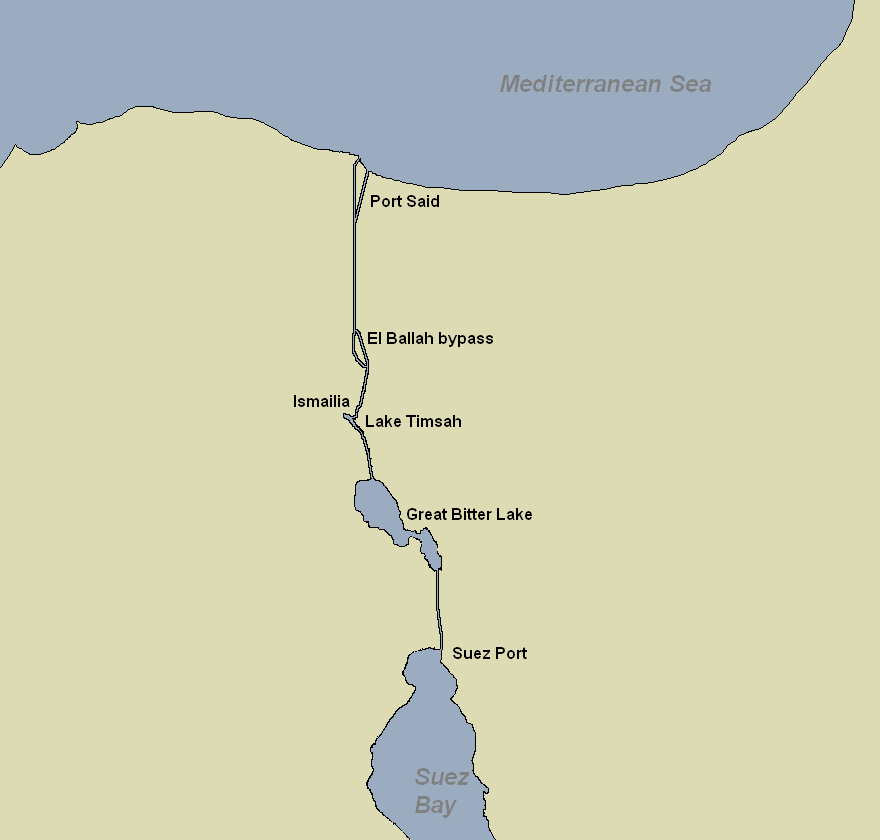The Suez Canal connects the Mediterranean Sea and the Red Sea and extends for a total length of 192 kilometres. The Mediterranean entrance is situated at Port Said and the Red Sea entrance at Suez Port.
There is no restriction on the length of a vessel, max air draught is 68 meters, max beam is 70.1 meters and max transit draught is 66 feets. The beam and draught dimensions can vary as the Canal Authority operates a breadth and draught table. See table here: CLICK HERE
The canal operates a lock-free transit system with passage by convoy, one southbound and one northbound daily, with an average transit times between 11-12 hours.
.
It is recorded that Egypt was the first country to dig a canal across its land with a view to activate world trade.
The first canal was dug under the reign of SENAUSRET III, Pharao of Egypt (1887-1849 BC) linking the Mediterranean Sea in the north with the Red sea in the south via the river Nile and its branches.
The Canal often abandoned to silting and was successfully reopened to navigation by SITY I (1310 BC), NKHAW (610 BC), Persian King DARIUSSLI POLEMY II (285 BC), Emperor TRAJAN (117 AD) and AMRO IBN ELASS, following the Islamic conquest.
In modern times the Suez Canal is actually the first canal directly linking the Mediterranean to the Red sea.
Excavation of the present Canal begun on April 25, 1859 and was opened for international navigation on November 17, 1869. The Canal has been closed five times.
The longest period of closure was following the 1967 war, when the canal was closed during 8 years. The Canal was reopened for navigation on June 5, 1975.
Characteristics of the current canal lengths
Total Length of the navigable canal 192 KM
From Port Said to Ismailia 78 KM
From Ismailia to Port Tewfik 84 KM
Double parts of the canal 84 KM
Breadth between buoys 180 M
Maximum possible draft of ships 58 FT
Airdraft from July 2000 68 M

